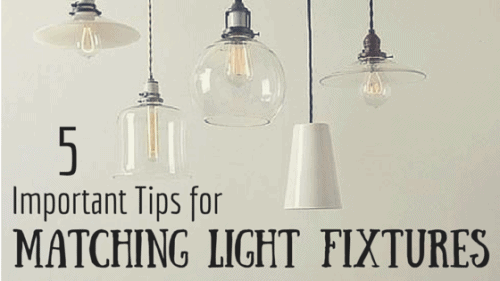 Sometimes you want your light fixture to cover a large area but one is just not enough. But you’re reluctant to spend a few hundred bucks on another of the same light fixture. What can you do? The solution is as simple as this: Get a complementing light fixture of course! But be cautious, this is an art form that is as serious as matchmaking. You need to find a partner that blends well with your light fixture for the environment to be harmonious. How can you achieve that? Like a skilful matchmaker, there are certain signs to look out for when pairing light fixtures.
Sometimes you want your light fixture to cover a large area but one is just not enough. But you’re reluctant to spend a few hundred bucks on another of the same light fixture. What can you do? The solution is as simple as this: Get a complementing light fixture of course! But be cautious, this is an art form that is as serious as matchmaking. You need to find a partner that blends well with your light fixture for the environment to be harmonious. How can you achieve that? Like a skilful matchmaker, there are certain signs to look out for when pairing light fixtures.
Opposites Attract
We’re not sure how many times we’ve repeated this design trick but we won’t hesitate to bring it up again here. In this case of opposition, we’re focusing on… focus. Like every good movie, there is an actor and a supporting actor; this makes everything less overwhelming and the viewers less confused as to who they should focus more on. Choose one light fixture to be the statement light and the other should serve as a form of support.
Birds of a Feather Flock Together
There are also some couples what work well because they’re so alike – they share common interests or overlapping personalities – allowing for them to strike a comfortable power balance. The same can apply for light fixtures where both fixtures have command the same amount of attention in very differing ways. This rule is great for large spaces that gives way for both light fixtures to shine.
Regardless, there is still a need to understand how some combinations work and why some don’t. The following outlines key features that can serve as the bridging point between the light fixtures.
ONE :: Form
This highlights the general shape of the light fixture and is the most straightforward way of finding a match because it is the most striking quality. Notwithstanding the other factors, finding a pair of lights with an identical or similar form will facilitate greatly in the matchmaking process. If you’re going for a single statement light fixture, you can draw the distinction by altering the size or the colour of the feature light. A simpler design for the supporting light fixture allows for the attention to be directed to the main light.
However if you’re heading the balanced route, you can try varying the type of light fixture. This would mean matching a pendent light with a standing light or a wall light with a table lamp. Other possible factors to change are colour and material.
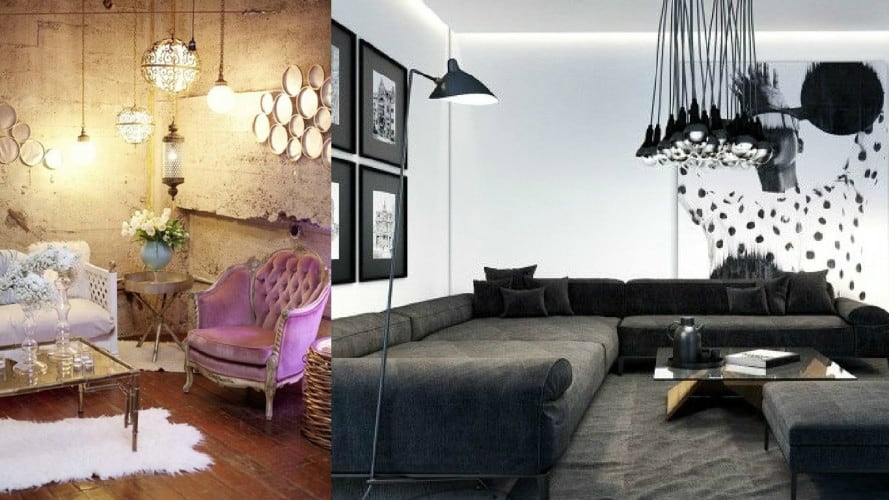 Don’t you adore the globe pendent lights in the leftmost picture? Check out our EMBLA Contemporary Glass Jar Lamp. For the hanging lights in the picture on the right, have a look at the KALLE Spider Hanging Wire Lights or AINA Web Hanging Lights .
Don’t you adore the globe pendent lights in the leftmost picture? Check out our EMBLA Contemporary Glass Jar Lamp. For the hanging lights in the picture on the right, have a look at the KALLE Spider Hanging Wire Lights or AINA Web Hanging Lights .
TWO :: Material
If you’re going for a certain theme in your space, you can play with materials to bring out specific qualities of your chosen theme. For instance, an Industrial themed space will commonly sport metallic or concrete accents while you’ll be seeing tons of wooden elements in a Scandinavian space. By picking light fixtures made of the same or similar materials, you can form a sweet connection between the light fixtures and help them fit into their environment.
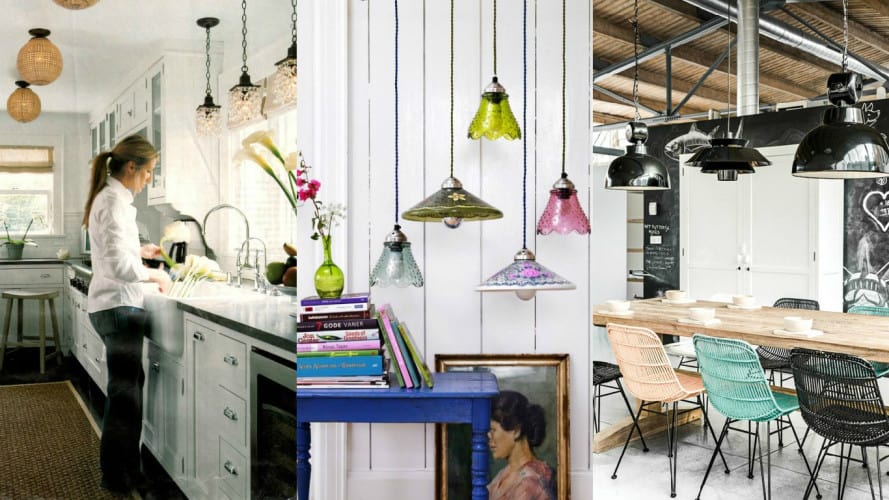 We love the glass lights in the leftmost and middle pictures. We think our JORGEN Disk Shape Twin Lamps and IVAR Transparent Pot-Lid Lamp comes pretty close! And aren’t the industrial style lights in the right picture so chic? Find more of these kinds of light fixtures under the industrial section of our store!
We love the glass lights in the leftmost and middle pictures. We think our JORGEN Disk Shape Twin Lamps and IVAR Transparent Pot-Lid Lamp comes pretty close! And aren’t the industrial style lights in the right picture so chic? Find more of these kinds of light fixtures under the industrial section of our store!
However, in the case of materials, sometimes it is hard to draw the connection between the light fixtures are materials aren’t the most distinctive quality in most designs. Therefore, it is advisable to stick to materials within the same colour palette.
THREE :: Pattern
Another way to draw a link between the light fixture is through its print. This is a more advance way of styling light fixtures as mixing and matching patterns is an art form in itself – very much similar to fashion styling. Here are three simple things to keep in mind when matching patterns:
Motif
The sure-win way of matching patterns would be to reuse the motif on the other light fixture. Search for light fixtures from the same season or same line; they normally repeat the motif on other designs. They don’t have to be identical – actually it’d be better if they’re not: it’ll be a bit of an overkill, don’t you think? Also, where is the fun and creativity in that? Experiment with motifs of different colours but make sure it floats well with the rest of your space!
Size and Spacing
If you’re going with a conventional shape as a pattern, then you can look into varying the size of the shape between the light fixtures. For instance, you can use smaller and more widely spaced polka dots for one light fixture while the other has larger and more cluttered dots. The idea of the dots is the factor weaving the connection between the two fixtures.
Colour Palette
Colour of the light fixture can be a point in itself (and yes, we’ll be touching on this later) but here we’ll be delving into the colour of the patterns. It is possible to build a bond between two completely different patterns by using the colour palette. Go for two to three common colours between the patterns and you’re all set. Note that these common colours don’t have to be completely identical but the viewers should be able to draw a visual similarity.
With all that mumbo jumbo being said, we pretty sure you’re all set for the arena of patterns and prints galore!
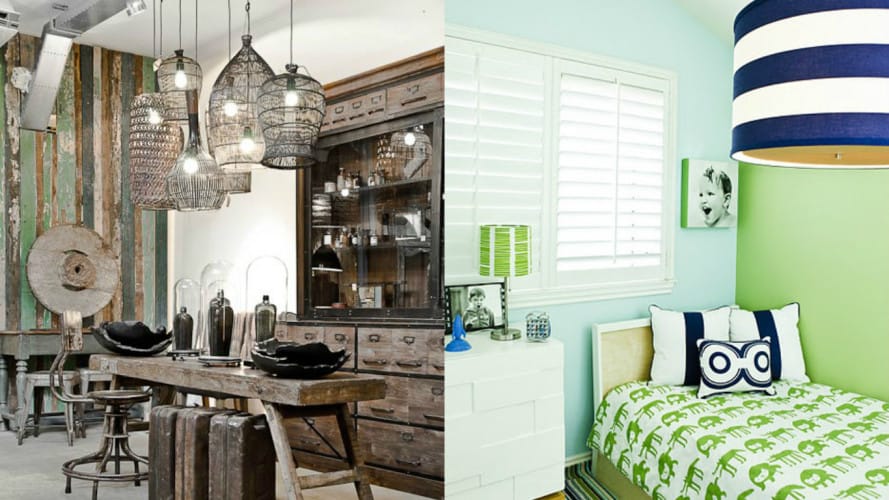 FOUR :: Colour
FOUR :: Colour
This point swooped in faster than we thought it would! Ah, colour! There is so much that can be said about this broad and flexible topic. Here, we’ll be zoom in on how colour can help two separate souls make a special and sacred connection with each other. Obviously, to draw a link between the light fixtures will be to use the same colour or colours from the same palette. However, there are various factors to determine the degree in which the colours should differ.
Surface Area of the Colour
For large surface areas, the colour becomes a stark feature on the light fixture, therefore opting for colours that differ by a few shades will be obvious. Hence, stick to a colour that is identical or almost identical. On the flip side, if the colour occupies less than 30% of the light fixture, there is room for variation in the shade.
Opacity of the Colour
Some materials such as glass and acrylic paired with the type of light can visually change the colour tone on your light fixture. This is largely applicable to warm lights as the orange-yellow glow will mix with the colour of the shade. Therefore, when shopping for your light fixture, make sure to take into account the type of light bulb you’ll be using.
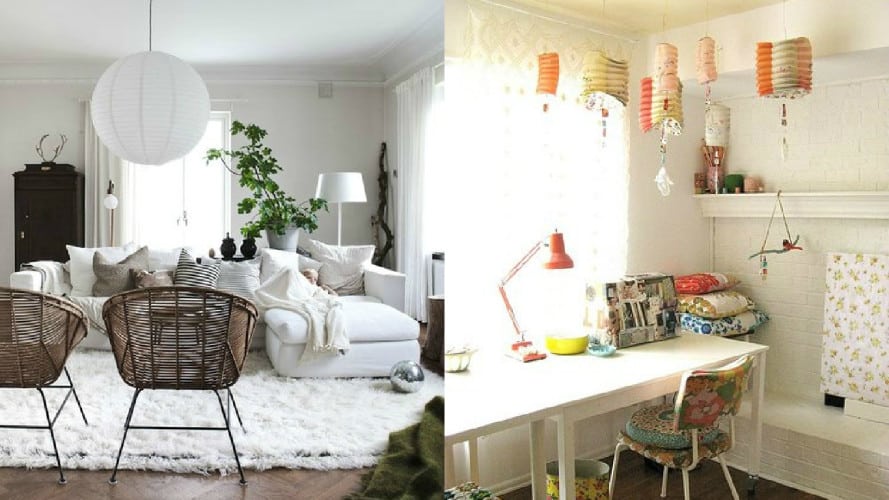 FIVE :: Space
FIVE :: Space
Finally, your overall environment cannot be forgotten in the midst of your matching excitement. Remember our point of actors and supporting actors? Sometimes you only need that extra light fixture because you need to light unreachable areas, you might want the additional light fixture to command little to no attention. This is where your space comes into place. Instead of complementing your light fixtures with each other, try to focus more on blending your supporting light fixture to the surroundings. If your walls are white, go for a supporting light fixture that is pure white. This way, all the attention will be diverted to the main character.
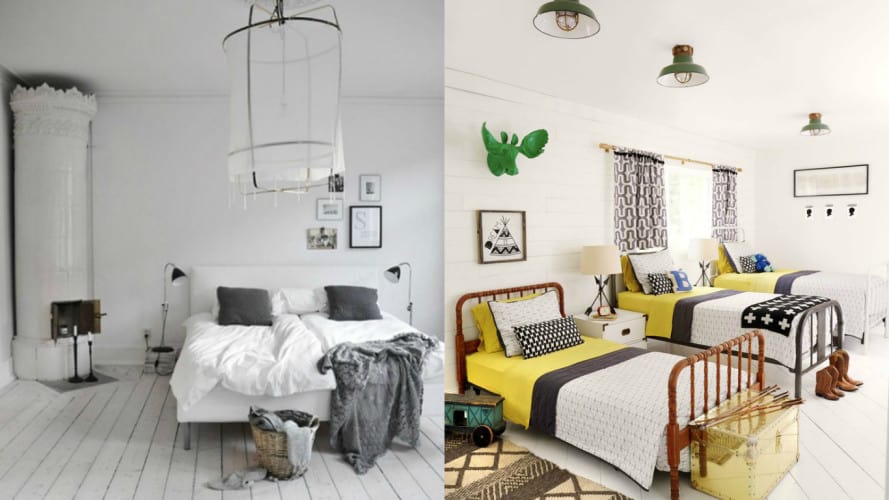 Did the green ceiling lamps catch your attention? They’re so unique and do a great job at subtly adding colour into your space. We have a similar green ceiling lamp in our store and if you’re not a green person (no pun intended!), then why not try blue?
Did the green ceiling lamps catch your attention? They’re so unique and do a great job at subtly adding colour into your space. We have a similar green ceiling lamp in our store and if you’re not a green person (no pun intended!), then why not try blue?
Simple enough? These tips and tricks are the bare essentials to acing the mixing-matching game. Final tip: When shopping for these light fixtures, do not go searching for two complementary light fixtures at the same time! Instead, find one that you really, really adore and then search for its soul mate according to its character and personality. Isn’t this fun? We think it is!
Played matchmaker to any household furniture as of late? Show us your prowess by tagging us in your posts! We’re on FaceBook, Instagram and Pinterest!



